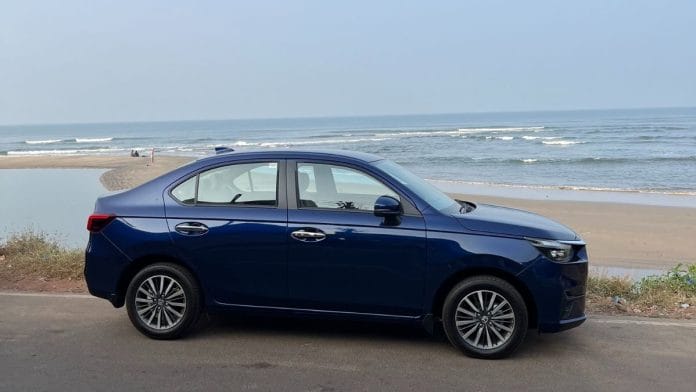Regular readers of this column would have deducted that I have a love-hate relationship with Advanced Driver Assistance Systems or ADAS. The ‘active’ safety features on vehicles. I’ve always found them extremely irritating. But that’s what most Indian consumers want these days and many new cars have them on their higher grade models.
Unlike ‘passive’ safety features like airbags, seatbelts and structural safety; ADAS ‘active’ features intervene and warn drivers of potential hazards, and if the driver does not change their behaviour it will take action. Honda Cars India has now installed ‘Honda Sensing’, which is what they call their ADAS suite on their new third-generation Amaze, which I recently drove around Goa. This is the first time a passenger car priced below Rs 10 lakh (ex-showroom) features ADAS and it is also the first compact sedan to have it. However, it must be noted that this feature is only available in the top ‘ZX’ grade.
I drove around the Amaze on the narrow panchayat roads and some twisty ghat sections instead of the highways. Many core ADAS features such as adaptive cruise control and lane keep assistance work best on such wide, expansive and well-marked roads. It must be noted though, that this system does not have the ‘blind-spot’ and rear cross-traffic warnings that some more expensive vehicles like the Hyundai Creta have.
Ace up Honda’s sleeve
The Honda Sensing works almost exactly on Amaze as it does on Honda City or Elevate. And while I did get a couple of collision warning alerts when scooterists darted in front of me, the emergency brake never did activate. Speaking with Honda Cars India Managing Director, Takuya Tsumura, I found out that over 60 per cent of the 5,000-odd cars that Honda sells in India every month feature ‘Honda Sensing’, and they felt that it is only right that they offer it on the Amaze as well.
However, the new Amaze is more than just about Honda Sensing, although in this segment, this could be the ace up Honda’s sleeve. Featuring the same 1.2 litre iVTEC engine and five-speed manual transmission or a Continuously Variable Transmission (CVT) automatic of the preceding generation (with some minor tweaks) it felt mechanically sorted. That said, there was a lack of grunt at the lower-end of the power range and was mashing the gear lever a bit more than I would have liked to. I did not get a chance to drive the CVT version too much, but they are way better automatics than the Automated Manual Transmission (AMT) options offered by rivals in the segment.
Where the Amaze scores though is in its ride and handling. The vehicle felt incredibly planted on the twisty ghat roads, and that was because it was a sedan and not a high-riding SUV, although Indian passenger vehicle buyers seem to have a love affair with SUVs. Honda engineers have worked on making the Amaze feel more spacious inside, despite the restrictive confines of the compact sedan segment that forces them to be below four meters in length.
That said, the compact sedan market is growing very slowly, although it is in a better state than the larger sedan segment where the City operates. So, Honda might be better served if they launched a SUV bodystyle on this Amaze platform. According to Tsumura, told me that Honda will be launching three new ‘nameplates’ by 2026-27. Perhaps one of those will be a compact SUV to take advantage of the fast-growing segment just like Skoda is doing with the Kylaq.
Also read: BMW i5 M60 proves EVs can be fun too. Cars haven’t lost their soul
Amaze ride in Goa
Unlike tourists who stick to the same old, same old, I like to discover new parts of Goa. And having a car helps with them. Earlier this year, I found myself at the 13th-century Tambi Surla temple in the heart of the western ghat forests at Mollem National Park.
Before that, I went to the fascinating Galgibaga beach at the very southern edge of the state which is clear of shacks because it is protected as an Olive Ridley turtle nesting site.
And with the Amaze, I took it to the very northern edge of the state, to Querim and Tiracol and had a fascinating passage across the Tiracol river on a car ferry. Because of the massive infrastructure spending in Goa in the past decade, fewer of these operate there now. This ten rupee experience was quite cool in my opinion and afforded me a visit to Tiracol fort on a small sliver of land the Portuguese held on the northern bank of the river and where freedom fighters stayed in the early 1950s.
@kushanmitra is an automotive journalist based in New Delhi. Views are personal.
(Edited by Ratan Priya)






